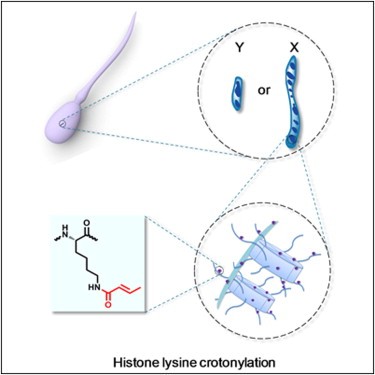
 |
| Histone Lysine Crotonylation( Image by Dr. ZHAO Yingming) |
An international team led by Professor ZHAO Yingming at Ben May Department for Cancer Research, University of Chicago, together with the scientists from Shanghai Institute of Materia Medica, Chinese Academy of Sciences (SIMM), University of California, San Diego (UCSD), Université Joseph Fourier, and Stanford University, discovered a novel type of histone mark- lysine crotonylation.
By using an integrated, mass spectrometry-based proteomics approach, they identified 130 PTM sites on human histones, including 67 novel histone marks. This research has not only increased the number of known histone modifications by 70%, but also identified one new type of histone mark, lysine crotonylation (Kcr), a novel and evolutionarily-conserved histone PTM. The unique structure and genomic localization of Kcr suggest that it is mechanistically and functionally different from a well known histone mark-lysine acetylation.
They further showed that histone lysine crotonylation marks either active promoters or potential enhancers, and is a specific mark of active sex chromosome-linked genes in post-meiotic male germ cells. This study therefore reveals an important novel mechanism of epigenetics and the novel histone marks provide a stepping stone for the future studies of these pathways in cellular physiology and diseases.
This work was recently published online in the November 16 issue of Cell. Shortly after publication, this research was highlighted by Nature Reviews Genetics and will be published in its November issue.
Paper abstract: http://www.cell.com/abstract/S0092-8674(11)00891-9

86-10-68597521 (day)
86-10-68597289 (night)

52 Sanlihe Rd., Xicheng District,
Beijing, China (100864)

